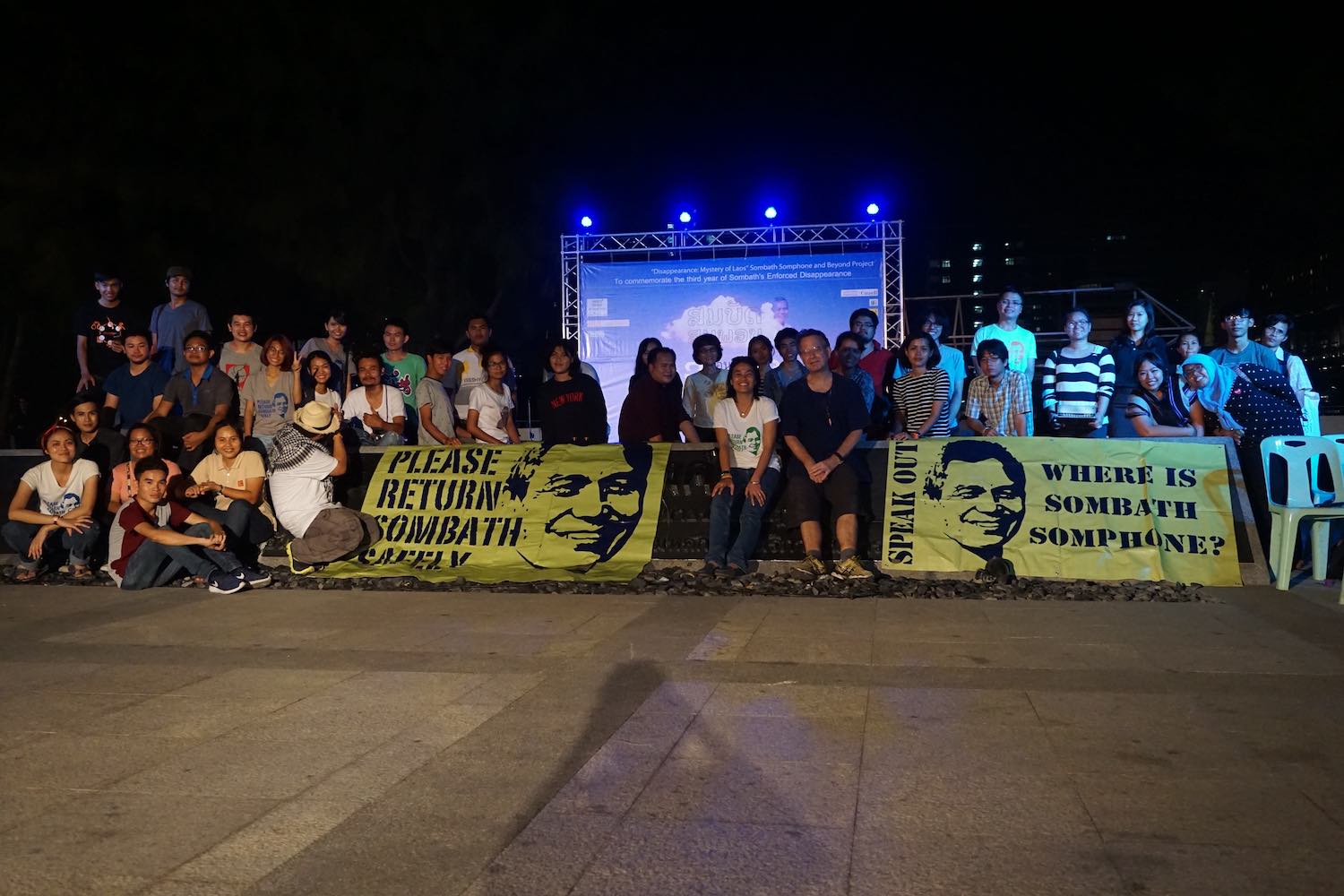Definition
 Enforced disappearance is when a person is secretly taken by the government, or by others with the knowledge and support of state authorities. The government then denies any role in the abduction, as well as knowledge about what happened, or where the person might be. The result is that the person is denied all legal rights and protection.
Enforced disappearance is when a person is secretly taken by the government, or by others with the knowledge and support of state authorities. The government then denies any role in the abduction, as well as knowledge about what happened, or where the person might be. The result is that the person is denied all legal rights and protection.
Enforced disappearance is often considered one of the most serious and brutal crimes for several reasons:
- The family and colleagues of the victim often have very few legal options. There is usually little evidence, or the authorities refuse to investigate or seek evidence, because they do not acknowledge that a crime was committed.
- Not only does the victim’s family have no knowledge of what happened to their loved one, they are often afraid to speak out or pursue the case because they fear it may have further negative effects. Because of this, the family is also a victim of the crime.
- Enforced disappearance also creates significant fear among friends, colleagues and peer groups. Because they usually do not know the specific reason the person was abducted, they become afraid to act. In this way, enforced disappearance can also be a means of repression against wider society.
- At the same time, enforced disappearance can result in both complicity and complacency among the broader population. Because there is little evidence and no legal case, others can pretend the crime did not occur and that the situation is normal.
International Law and Mechanisms
Internationally, enforced disappearance has been recognised as one of the most serious of all crimes. According to international law, if enforced disappearances are widespread or used systematically against the civilian population, it is considered a crime against humanity. If used in conflict, it is considered a war crime. Because it is such a severe crime, there is no statute of limitations on enforced disappearance.
In 1980, the United Nations formed the Working Group on Enforced of Involuntary Disappearances (WGEID). Located under the UN Office of the High Commissioner for Human Rights, the group’s main function is to assist families who have been the victim of enforced disappearance.
Importantly, cases to the WGEID must be filed by relatives, or by human rights organisations working on behalf of the family. The WGEID then raises those cases with the government, requests the authorities to investigate, and follows up until the case is resolved. The WGEID is only concerned with discovering the fate or location of the disappeared person, not in identifying or charging those responsible.
In 2006, the International Convention for the Protection of All Persons from Enforced Disappearance (ICPPED) was adopted by the UN General Assembly. Currently, 95 countries have signed the ICPPED, and 51 have ratified it. The convention specifically states that enforced disappearances are not justified under any circumstances.
The ICPPED requires member countries to:
- Investigate acts of enforced disappearance and prosecute those responsible.
- Include the crime of enforced disappearance in their legal code.
- Cooperate with other states regarding enforced disappearances.
- Transparently account for all persons currently imprisoned or detained.
- Provide reparation to the victims (including families) of enforced disappearance.
Enforced Disappearance Globally
Enforced disappearance has been used by many countries in recent history. Some of the most widely known are those by Spain during its civil war in the 1930s, Germany during World War II, Argentina and Chile in the 1970s, Iraq and El Salvador in the 1980s, and Algeria in the 1990s. Longer term conflicts in countries such as Columbia, Guatemala, Syria, India and Sri Lanka have also resulted in thousands of enforced disappearances. It is also widely acknowledged the practice was used by the United States in its “War on Terror.”
Currently, Iraq has over 16,000 cases of Enforced Disappearance being monitored by the WGEID. This is followed by Sri Lanka, with over 5,000 cases, and Algeria and Argentina, with over 3,000 cases each. Among ASEAN nations, the Philippines has the most active cases with 625, followed by Indonesia with 163, and Thailand with 82. The Lao PDR and Myanmar both have two cases, and Cambodia and Vietnam each have one.
Enforced Disappearance in Laos
The Lao PDR signed the ICPPED in 2008. During its first cycle Universal Periodic Review (UPR) in 2010, France and Spain recommended to ratify the convention. The Lao PDR accepted these, but did not ratify the convention. In its next UPR review in 2015, ten countries recommended ratification. The Lao PDR again accepted most of these, and noted they need yet more time to study the convention.
Currently, two Lao cases are listed with the WGEID, Ms. Kingkeo Phongsely, who disappeared in 2009, and Sombath Somphone, who was abducted in 2012. Six other cases, including students arrested in 1999, have been removed from the WGEID’s database.
It is important to repeat that the WGEID only records cases that have been submitted by victim’s relatives or a human rights organisation working on their behalf. If relatives are afraid, or such human rights organisations do not exist, then many cases may not be reported.
Further Reading
International Convention for Protection of All Persons from Enforced Disappearance

